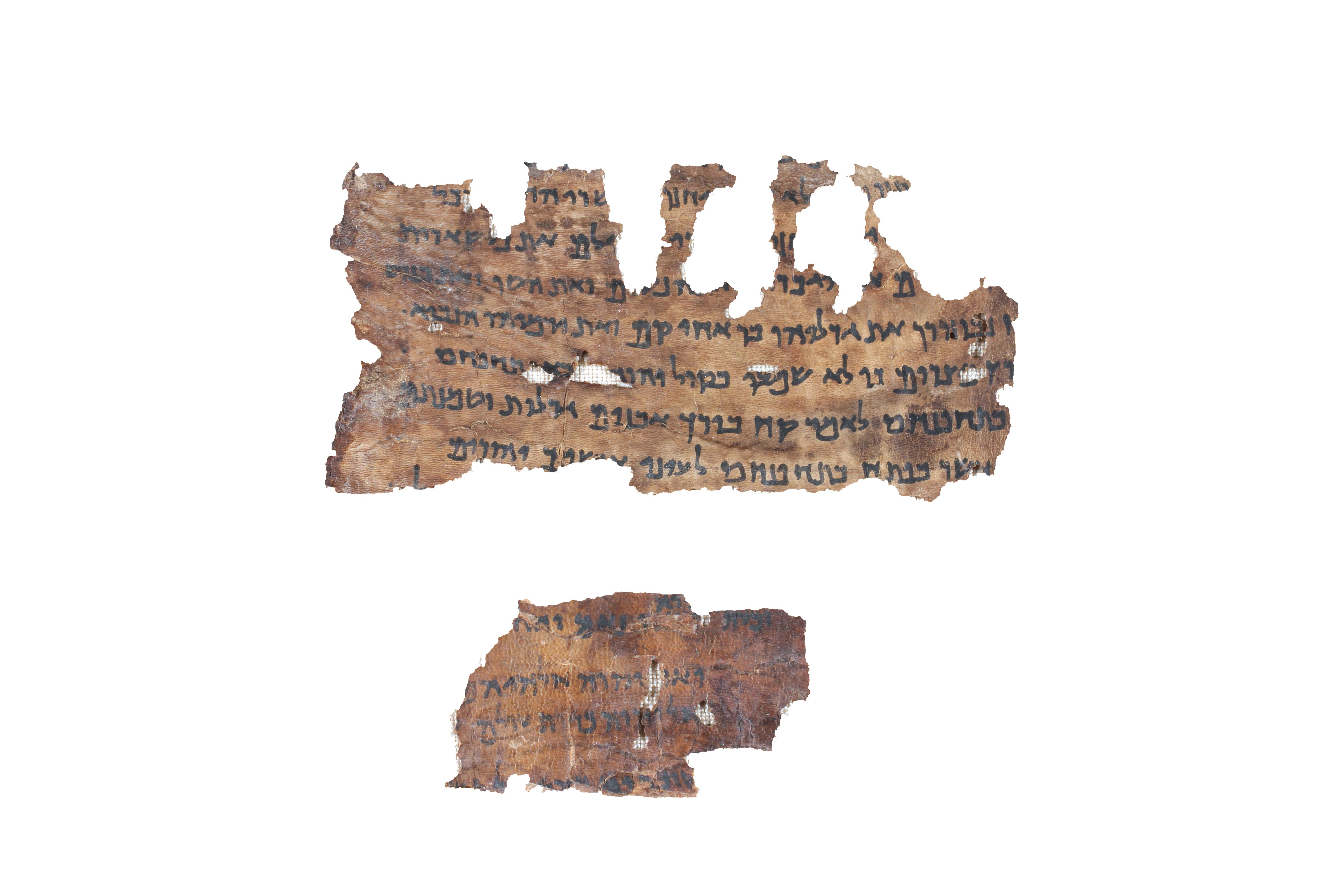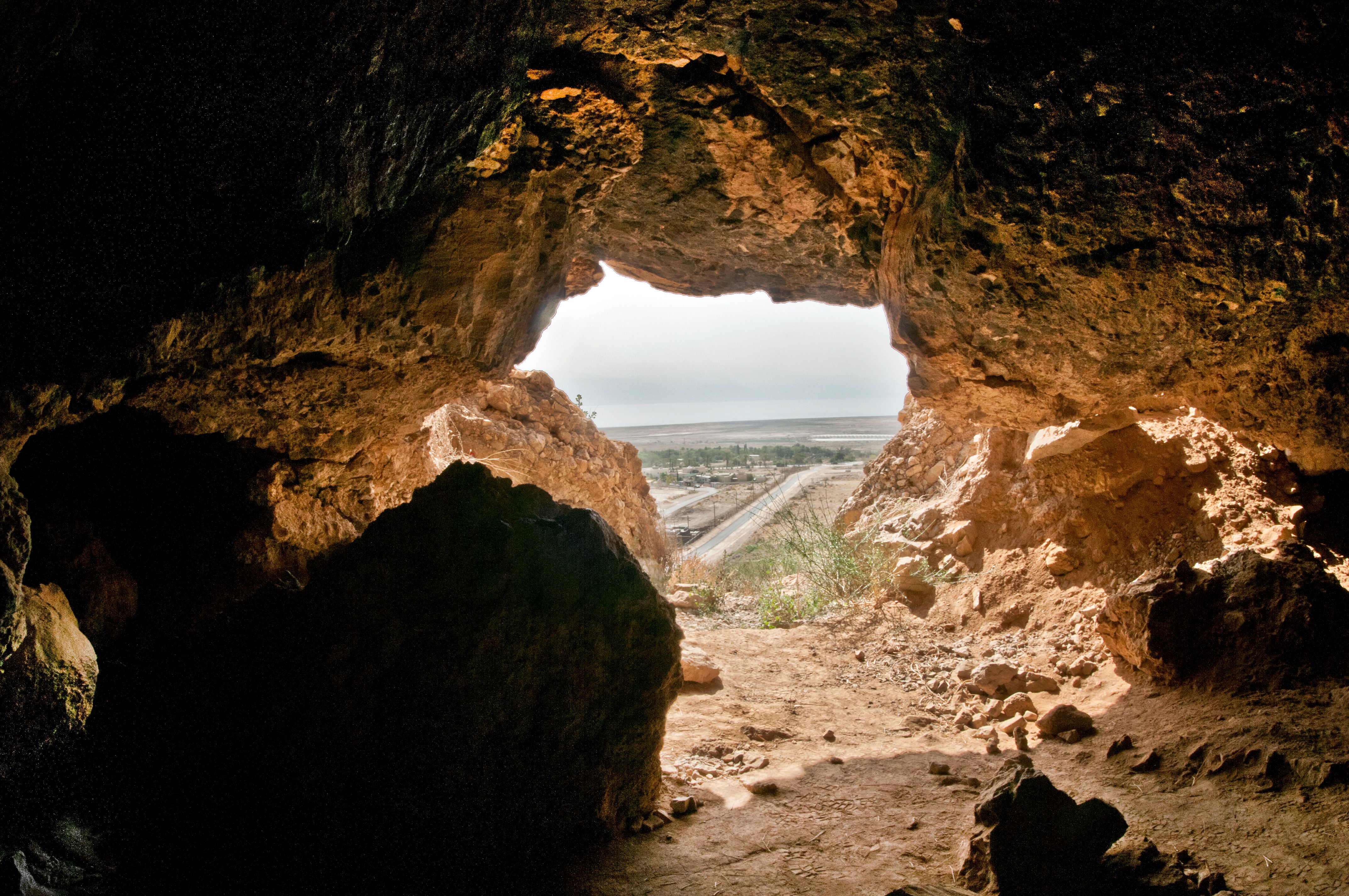Ancient DNA could reveal full stories on the Dead Sea Scrolls
The Dead Sea Scrolls are made up of 25,000 fragments that researchers are trying to piece together.

The Dead Sea Scrolls are made up of tens of thousands of manuscript fragments — mostly made of parchment, or animal skin. Now, scientists are analyzing tiny traces of ancient DNA in these fragments to piece together the story of the early text.
In the 1940s, the first of the Dead Sea Scrolls, which date back 2,000 years, were found in a cave near the archeological site of Qumran in the West Bank, on the northwest shore of the Dead Sea, Live Science previously reported. Since then, fragments of the scrolls have been found scattered across 11 caves near Qumran and a couple of other sites in the Judean desert. Still others have been found in the collection of antiques dealers.
Archaeologists currently have more than 25,000 of these fragments, which once made up a series of 1,000 ancient manuscripts. The scrolls include early copies of the Hebrew Bible, calendars, astronomical text and community rules, and even contained information on the location of buried treasure, Live Science previously reported. Since researchers first discovered these fragments, they have been trying to piece them together to understand the full story of the scrolls.
Related: In photos: New Dead Sea Scrolls revealed
In the past, scientists primarily did this by trying to fit the pieces together like a puzzle, according to a statement. But because most of the fragments are made of parchment (a sliver of them are made from other materials such as papyrus), researchers decided to piece them together using an invisible marker: the ancient DNA from the animals they're made of.

In the 1990s, researchers demonstrated that they could take little bits of ancient animal DNA from the scrolls and amplify them in the lab using a method called polymerase chain reaction (PCR). But this research was done before full animal genomes were known, before the invention of deep-sequencing technologies and before the scientific community learned how to deal with ancient DNA to avoid contamination, said senior author Oded Rechavi, a molecule biologist at Tel Aviv University in Israel.
Now, with deep-sequencing technology — technology that reveals the specific sequence of four chemical building blocks which make up an organism's DNA — readily available, it's possible to create a "fingerprint" for the creatures whose animal skins made up the scrolls
Sign up for the Live Science daily newsletter now
Get the world’s most fascinating discoveries delivered straight to your inbox.
For the new study, Rechavi and his team spent years analyzing ancient DNA from 26 different fragments.
But "we can't just take a fragment and grind it," Rechavi told Live Science. To obtain a sample of DNA without damaging the scrolls, researchers scraped off a bit of "scroll dust" from the uninscribed side of the fragments. Using PCR, they amplified this DNA to detectable levels and then ran it through the DNA sequencing machines.
They found that these samples contained both modern DNA — left by modern humans handling the scrolls — and fragmented ancient DNA from animals. They then compared these short sequences with the genomes of 10 animal species and found that most of these fragments were made from sheep skin.
"It's amazing that enough DNA can be extracted from the 2000-year-old scrolls," Rechavi said in an email. "They are not only old and contaminated, they have also been processed (to make parchment) which is very damaging to the DNA."

Those don't go together
But just as the pieces are hard to put together because they're fragmented, so is the DNA. "Since the DNA is fragmented and contaminated, it's typically very difficult" to tell whether the DNA belongs to one sheep versus another, Rechavi said. "We have to use multiple different and complementary analyses to confidently say whether two pieces belong together or not."
Related: Cracking Codices: 10 of the Most Mysterious Ancient Manuscripts
In some cases, it's more clear than in others, he added. They discovered that two fragments from the scrolls containing the text of the prophetic book of Jeremiah were made of cowhide. Before these findings, one of these fragments was previously thought to fit together with another from the book of Jeremiah made of sheepskin.
The fact that it would be difficult to raise cows in the Judean desert and the text found on these pieces were very different, likely means the cow fragments were processed elsewhere and then brought to the Qumran caves, according to the researchers.
"We can't tell exactly where the foreign scrolls originated, but we can tell, owing to the DNA analyses, that it was somewhere outside the Judean desert," Rechavi said. That likely means that Jews were "open" to reading different versions of the same biblical book that were circulating at the time, he said. That also likely means that they "cared more about the interpretation of the text than the exact wording."
They also discovered that some of the fragments thought to come from the Qumran caves might have come from elsewhere. For example, copies of a non-biblical text called the Songs of the Sabbath Sacrifice were important in understanding the history and thinking at the time. The new analysis revealed that copies found in the Qumran caves are genetically distinct (came from different sheep) from those found at the site of Masada. It was unclear if these scrolls were taken to Masada by people after the fall of Qumran in 68 C.E. or if it was drafted elsewhere and the work was popular in a larger area than the Qumran, according to the study.
These distinct genetic patterns suggest that the culture and thought processes of Qumran may have been more widespread than previously thought. "This is very important because most of what we know about the period in this area … is deduced by what was found in Qumran, and we didn't know before whether the culture of the Qumran sect represents the culture in other places" across ancient Judea, Rechavi said.
Now, the team hopes to study ancient DNA in even more of the scrolls — at least the ones that they can sample. "There are 25,000 fragments and we could only sample a few," Rechavi said. "There's plenty of work to do still."
The findings were published today (June 2) in the journal Cell.
- Gallery of Dead Sea Scrolls: A glimpse of the past
- In photos: Dead Sea Scrolls in America
- Photos: The ancient ruins of Shivta in southern Israel
Originally published on Live Science.
OFFER: Save 45% on 'How It Works' 'All About Space' and 'All About History'!
For a limited time, you can take out a digital subscription to any of our best-selling science magazines for just $2.38 per month, or 45% off the standard price for the first three months.

Yasemin is a staff writer at Live Science, covering health, neuroscience and biology. Her work has appeared in Scientific American, Science and the San Jose Mercury News. She has a bachelor's degree in biomedical engineering from the University of Connecticut and a graduate certificate in science communication from the University of California, Santa Cruz.











